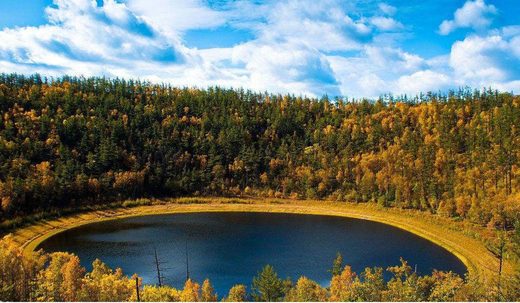Global cooling to replace warming trend that started 4,000 years ago - Chinese scientists
Stephen Chen
South China Morning Post
Sun, 11 Aug 2019 06:30 UTC

© Xinhua
A team of Chinese researchers says a period of global cooling could be on the way, but the consequences will be serious.
A new study has found winters in northern China have been warming since 4,000BC - regardless of human activity - but the mainland scientists behind the research warn there is no room for complacency or inaction on climate change, with the prospect of a sudden global cooling also posing a danger.
The study found that winds from Arctic Siberia have been growing weaker, the conifer tree line has been retreating north, and there has been a steady rise in biodiversity in a general warming trend that continues today. It appears to have little to do with the increase in greenhouse gases which began with the industrial revolution, according to the researchers.
Lead scientist Dr Wu Jing, from the Key Laboratory of Cenozoic Geology and Environment at the Institute of Geology and Geophysics, part of the Chinese Academy of Sciences, said the study had found no evidence of human influence on northern China's warming winters.
"Driving forces include the sun, the atmosphere, and its interaction with the ocean," Wu said.
"We have detected no evidence of human influence. But that doesn't mean we can just relax and do nothing."

© BaiduShare:
Moon Lake, a small volcanic lake hidden in the deep forest of China's Greater Khingan Mountain Range, where a team of scientists spent more than a decade studying the secrets hidden in its sediments.
Wu and her colleagues are concerned that, as societies grow more used to the concept of global warming,
people will develop a misplaced confidence in our ability to control climate change. Nature, they warned, may trick us and might catch us totally unprepared - causing chaos, panic, famine and even wars as the global climate system is disrupted.
Comment: And this is exactly what is happening; good people are being brainwashed by the nefarious and misguided into thinking they can somehow control the global climate with drastic and
deleterious changes in their lives:
The Misanthropic Bankers Behind The Green New Deal
There are already alarming signs, according to their paper, which has been
accepted for publication by the online Journal of Geophysical Research: Atmospheres.
Wu and her colleagues spent more than a dozen years studying sediments under Moon Lake, a small volcanic lake hidden in the deep forests of the Greater Khingan Mountain Range in China's Inner Mongolia autonomous region. They found that
winter warming over the past 6,000 years had not been a smooth ride, with ups and downs occurring about every 500 years.
Their findings confirmed an earlier study by a separate team of Chinese scientists, published by online journal Scientific Reports in 2014, which first detected
the 500-year cyclical pattern of China's summer monsoons and linked it to solar activity.
The 2014 research, which drew on 5,000 years' worth of data, suggested
the current warm phase of the cycle could terminate over the next several decades, ushering in a 250-year cool phase, potentially leading to a partial slowdown in man-made global warming.
Wu said the latest study, with 10,000 years' worth of new data, not only helped to draw a more complete picture of the 500-year cycle, but also revealed a previously unknown mechanism behind the phenomenon, which suggested
the impact of the sun on the Earth's climate may be greater than previously thought.
According to Wu, the variation in solar activity alone was usually not strong enough to induce the rapid changes in vegetation the research team recorded in the sediment cores of Moon Lake. Instead,
the scientists found the warming impact was amplified by a massive, random interaction between surface seawater and the atmosphere in the Pacific Ocean known as the El Nino-Southern Oscillation.
As a result of the research findings,
Wu said she was now more worried about cooling than warming.
"A sharp drop of temperature will benefit nobody. The biggest problem is, we know it will come, but we don't know exactly when."







